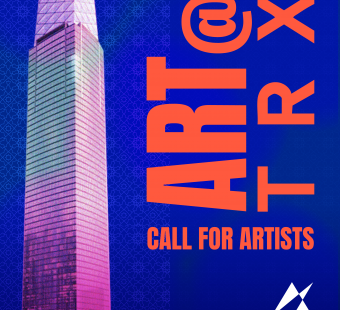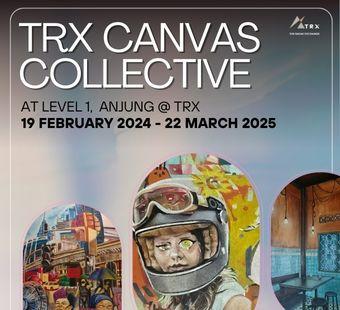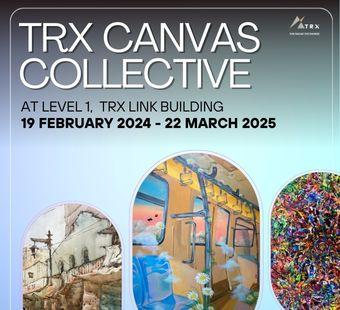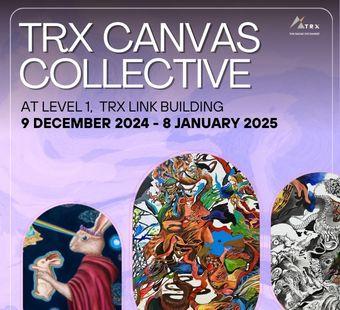Themed “TOMORROW”, the Kuala Lumpur Architecture Festival 2019 (KLAF2019) is bravely confronting the uncertainty of a postmodernist world balanced between the breathtaking possibilities of rapid technological advancement and the spectre of climate change.
The two design competitions that open KLAF2019 - “First Colony on Mars” and “Tropical House for Orang Asli” - perfectly encapsulates this thoughtful approach. By embracing the importance of both space travel and indigenous populations, KLAF2019 is pointing forward to an inclusive future of technological progress that is sensitive to diversity, resilience, localised knowledge, ecological stewardship and community engagement.
The Festival, which runs from 21 June to 7 July, has expanded to encompass a network of partners across the city. Diverse participants - including fine artists, emergency responders, data experts, technologists and orang asli activists - join in the conversation about the future of our built environment, moving beyond a top-down system to a more collaborative model.
“This Festival seeks to engage with the community. It is not just about people learning more about architecture and design, but about providing a platform to build future-proofed, shared and sustainable eco-systems,” said Ar. Dr. Tan Loke Mun, Director for KLAF2019 at the Festival’s launch.
Focus on sustainability
KLAF2019 organisers, Pertubuhan Akitek Malaysia’s (PAM) headquarters in Bangsar has joined forces with neighbours APW and NSTP to create the new Art Architecture Design District (A2D2), which hosts the “SHELTER” component. Here the urgent need for sustainable housing in the light of a rapidly growing human population facing depleted natural resources and environmental uncertainty is confronted head-on.
The PAM building hosts the pragmatic and timely “AWAS! User Manual of Emergency” exhibition, curated by three local organisations involved with disaster mitigation and relief, namely the Scouts Association of Malaysia, Mercy Malaysia, and Epic Homes. On display are installations, tools, models of emergency homes and full-sized shelters made from leaves and branches, all of which are sourced from real case studies.
Outside the PAM HQ, one of the winning designs from the Orang Asli house competition has been fully constructed, while another winning design stands within the APW grounds.
At APW, sustainable construction and fine art come together, with a clear focus on supporting marginalised indigenous communities and learning from their ethos of living harmoniously with nature. Visitors can access a full programme of Orang Asli-focused talks, forums and cultural performances.
Bamboo is the featured material at APW, with craftspeople fashioning everything from bicycles to guitars out of bamboo. The Bamboo Ark, a large, eye-catching shelter, demonstrates both the beauty and utility of the plant. Constructed without nails or brackets, it is the bamboo itself that bends and intertwines to create a sturdy, comfortable and attractive structure, perfectly suited to the tropical climate.
“Bamboo is a versatile, durable, flexible and sustainable material,” said Low Ewe Jin, who designed Bamboo Ark. “Through this installation, we want to showcase bamboo’s beauty, strength and many other advantages to create awareness and desire to use this material to build all kinds of structures, even urban homes,” the architect said, recounting his own positive experiences living in a bamboo house he designed in Bali.
Art and architecture meet
The focus on sustainability at A2D2 is complemented by the cluster of exhibitions by art galleries, including Suma Orientalis’ “Superstructure”, a Japan-Malaysia collaboration which explores the line between art and architecture, and the NSTP Gallery’s art auction featuring some of the country’s most well-known artists, all addressing some aspect of architecture, structure or form.
City centre players join in with the “ARCHITECTURE + ART” component presented by arts institutions like Galeri Petronas and the National Art Gallery as well as rejuvenation champions like RexKL, an old cinema turned cultural centre, and Ruang, housed in the iconic deco-style OCBC building managed by the urban regeneration agency, Think City.
Photographer Chong Kok Choon’s “The Species of Spaces”, stark photographs of disused phone boxes exhibited in Ruang, cleverly addresses how ideas of the future are shaped by the creativity of local communities. Once a technological marvel, the landline telephone is now near redundant, but city phone booths find new life as shelter for cats, storage space for construction workers and local residents, and medium of expression for cheeky pranksters and graffiti artists.
“The character of people who use a structure or building comes out beyond what the original intent was,” Chong said. “Users breathe life into these things, sometimes in unexpected ways.”
Other exhibitions range from an alternative history of Japanese architecture to celebrating the unsung heroes behind Kuala Lumpur’s construction.
The future is tech
The DATUM:KL conference has always been the heart of KLAF, and this year acts as the curtain closer, from 4 to 6 July at the KL Convention Centre.
New designs, ideas and technologies will be presented and debated, including big data and AI, agrotechnology and urban farming, multifunctionality, building biology, and how we can use waste as construction material.
There will also be a Tomorrowland pavilion allowing futurists to present their take on the possibilities for architectural and urban design. Tech is the star here, so expect robotics, virtual reality and other game-changing innovations to be on display.
For more information and the full programme of activities visit www.klaf.my or their official Facebook page here.









